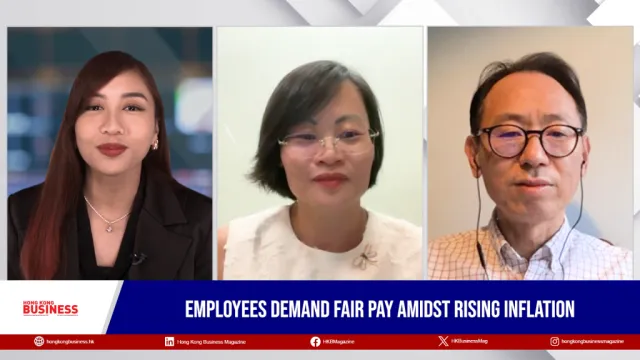
Firms revamp benefits to retain older workers as youth opt for opportunities abroad
A Randstad expert said employers should consider giving their employees financial literacy benefits.
After many young employees emigrated from Hong Kong, local firms had to shift their focus on what was left of their talent pool: the older workforce.
To retain their older employees, companies would usually offer benefits such as flexible work schedules, training and education, and healthcare. But according to HR experts, companies can do more than just these. Firms, for example, can consider providing their employees with financial literacy benefits.
“A study conducted by St. James Place revealed that more than one in two middle-aged Hongkongers has not started planning for their retirement. Their deterrence could be due to the lack of awareness and comprehension of the retirement financial instruments and services available to them,” Leslie Tang, head of Client Solutions - Search & Selection at Randstad Greater China, told Hong Kong Business.
“Whilst this may be concerning, Hongkongers are very receptive to receiving professional financial advice. This could be an opportunity for companies to provide seasoned employees with financial literacy assistance and training to improve overall retention,” he added.
Ashley Palmer, head of Wealth Solutions for Asia-Pacific at Aon, advised companies to regularly review their Mandatory Provident Fund (MPF) providers to ensure that their retirement plans remain competitive and deliver sustained good performance.
“There is a clear water between good, bad, and ugly MPF funds. What we typically see are vendors with high fees where the employer has not undertaken a MPF review for many years. High fees mean eroding retirement savings of employees,” Palmer said.
Another way companies can help employees with their future retirement planning is to have early conversations with them about it. Palmer said good companies would start this discussion with employees in their 50s. This can also open doors to enable more gender balance in leadership positions.
Also having an effective policy on employment contracts is important.
“Ensure your employees are aware of how their contracts might be continued. From our study, we see there’s quite a lot of practices around typically offering fixed term contracts to employees once they reach contractual retirement age, so that process needs to be seamless,” he said.
Pros and cons of an older workforce
Whilst younger employees seem more energetic and enthusiastic to drive change, Tang said an experienced talent has “accumulated a rich base of experience to make well-informed decisions.”
The professional network of older employees is something that companies can leverage, added Tang.
As mature employees already have institutional knowledge and skills in the organisations, retaining them will be great for succession planning, said Palmer.
Tang, however, underscored that since older employees have more expensive healthcare coverage for age-related illnesses and retirement, companies might end up looking for a new hire instead.
This is why Tang advised companies to maintain a diverse workforce for different generations to collaborate.
“In a diverse workforce, employers will have the opportunity to create mentorship opportunities, which is critical for career development and success in the workplace. Experienced employees can coach younger employees in developing their soft and leadership skills which will help them thrive professionally within the organisation,” Tang said.
Palmer had a similar sentiment, saying that intergenerational collaboration in the workplace will be beneficial to both employees and the company.
Tang said intergenerational collaboration can be done through mentoring and reverse mentoring programmes.
“A young professional could be partnered up with a mature and seasoned worker to foster understanding and collaboration between each other. The success of such programmes depends on the willingness to accept different opinions and perspectives, which is often driven by a natural curiosity and motivation to learn,” he said.
Making the young stay
Having a diverse workforce means retaining not just the old, but younger employees.
A way to do this is by “creating a positive employee experience,” said Tang.
“In Hong Kong SAR, 90% of workers find companies that can provide a good work-life balance attractive to work for. Hongkongers view work-life balance as having enough personal time to spend with the people they care about,” he said.
“People want to be empowered with the flexibility to work anytime and anywhere, as it gives them the autonomy to incorporate work into their plans for their life and family. They also wish to work for an employer that can fairly support a manageable workload so that they don’t have to work overtime unnecessarily,” he added.
Palmer said companies can also provide internal career mobility for their employees to make them stay in a company for a long time.
“That’s where you allow high potential talent to hold different roles in your organisation,” he explained.
Most importantly, Palmer said firms must regularly check employee pulse engagement to retain employees, regardless of age.
“Understand how employees are feeling, what their needs are, and act on the improvement areas,” he said.



















 Advertise
Advertise








